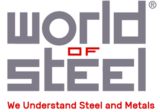Permanent Mold Casting
Instead of using sand as the mold material, a metal is used as a mold. Typically cast iron or Meehanite (a dense cast iron) is used as the mold material and the cores are made from metal or sand. Cavity surfaces are coated with a thin layer of heat resistant material such as clay or sodium silicate.
The process involves the following steps:
- A refractory wash or mold coating is brushed or sprayed onto those surfaces of the preheated mold (usually 250-50OF or 121-260C) that will be in direct contact with the molten metal alloy. The proper operating temperature for each casting is set.
- Cores, if applicable, are inserted, and the mold is closed either manually or mechanically.
- The alloy, heated above its melting temperature, is poured into the mold through the gating system.
- After the casting has been allowed to solidify, cores and other loose mold members are withdrawn, the mold is opened, and the casting is removed.
- The usual foundry practice is followed for trimming gates and risers from the castings.
The basic difference between sand casting and permanent mold casting is the metal (or permanent) mold used in the permanent.mould process. Permanent mold castings usually have better mechanical properties than sand castings because solidification is more rapid and fill is more laminar. The basic difference between permanent mold and die-casting is that permanent mold is a gravity feed process versus injection yielding a denser casting.
Metal molds (or dies) usually are made of high-alloy iron or steel and have a production life of up to 120,000 or more castings.
It is desirable and generally more economical to use permanent steel cores to form cavities in a permanent mold casting. When the casting has re-entrant surfaces or cavities from which one-piece permanent metal cores cannot be withdrawn, destructive cores made of sand, shell, plaster and other materials are used. This variation is called the semipermanent mold method. Sectional steel cores are used in some instances.
Due to the chilling nature of a solid steel permanent mold tool, the castings are sounder than sand castings. For pressure-tight and nonporous castings, the permanent mold process is excellent. Permanent mold castings can be stronger than die and sand castings and less
porous than die-castings.
Permanent mold castings usually need less finish machining and polished than sand castings. If the parting lines on the outside of a casting can be held to a minimum, high quality as-cast finishes approaching 100 rms. can be achieved and many aluminum castings with these good as-cast finishes are used without subsequent finishing for cooking utensils, hardware items, automotive parts, highway bridge railings and ornamental work.
Typical materials used are small and medium sized parts made from aluminum, magnesium and brass and their alloys. Typical parts include gears, splines, wheels, gear housings, pipefittings, fuel injection housings, and automotive engine pistons.
